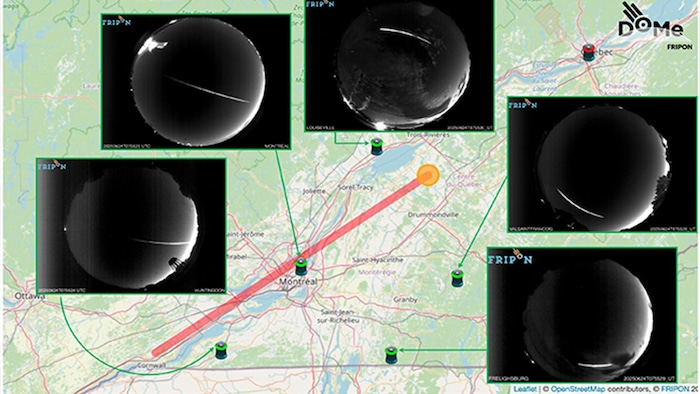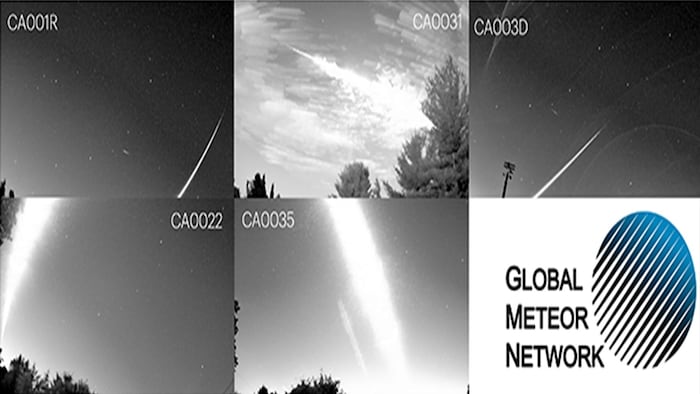If you saw a very bright shooting star in the morning hours, it was not a hallucination of Saint-Jean. An exceptionally bright meteorite crossed the sky of Center-du-Québec and could have left fragments in its path. The celestial object was luminous enough to be observable with the naked eye.
The last time we had as many public reports, it dates from 1994 in Saint-Robert
indicates Auriane Egal, scientific advisor to the planetarium.
At 3:55 a.m., the meteor was observed by a network of cameras installed in the St. Lawrence Valley by the Montreal Planetarium to monitor the passage of celestial objects.

This is the second time that the network of sky surveillance cameras in the St. Lawrence Valley has captured a meteorite.
Photo: provided by space for life
The analysis of the cameras confirms that many fragments have detached the meteor. The calculations of the trajectory suggest that several fragments have been able to fall to the ground near the eighth row, between Saint-Wenceslas and Lemieux. They may have dispersed within a radius of a kilometer from the road.

The meteorite was observed around 3:55 am in Center-du-Québec.
Photo: provided by space for life
Residents of the sector can walk their land in search of these rocks from space. These are small black fragments, which weigh between one and 10 grams, but it is not impossible to find larger pieces of a hundred grams.
If you find a fragment, you can contact the Montreal Planetarium to have its extraterrestrial origin authenticate. Auriane EGAL is categorical, a meteorite belongs to those who find them, but if you want to give it to scientists, avoid manipulating it with bare hands to avoid contamination.
We are particularly excited by this meteorite because because of the way in which the body has fragmented in the atmosphere, we think it is carbon chondrite, which is rare. These rocks have been little altered by time and they have a very large scientific value, since they are witnesses to the origin of the solar system
Explique aurian egal.
A recently fallen meteorite presents a characteristic fusion crust on its surface, formed by the heating of the rock during its crossing of the atmosphere. A fresh meteorite is generally black, smooth and shiny, with a different surface from the inside of the rock. It can also be metallic and react to a magnet.
Source: Montreal Planetarium

